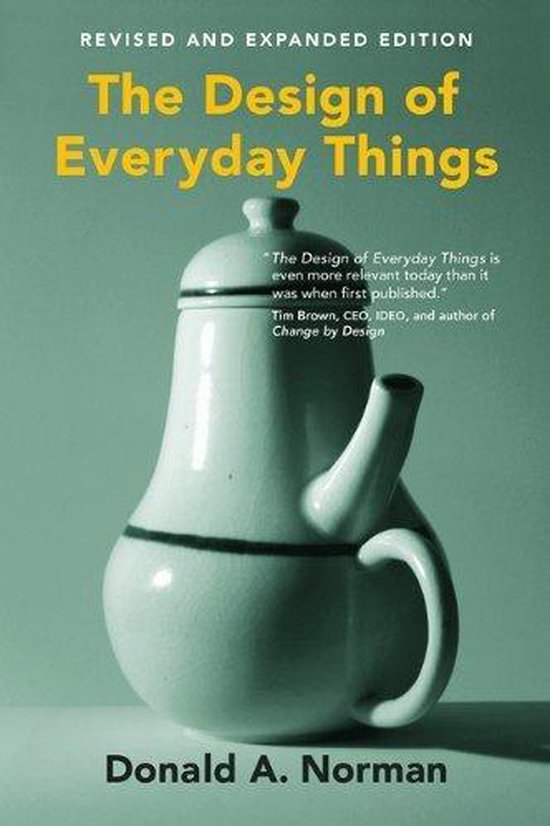
For instance, Norman’s famous in the design community for becoming the enemy of any door that an ordinary Joe might have difficulty figuring out how to get through. “The worst of them,” Kripalani says, “we now call ‘Norman Doors.’” Like, doors with a flat surface that looks like it should be pushed, but which you actually have to pull, or doors with revolving handles that don’t actually unlatch the door. In this chapter, Don Norman explains further how mental models[knowledge in the head] helps users interact with a product. It allows us make quick judgments(responses) about the environment subconsciously without conscious awareness. Great designers use aesthetic sensibilities to drive visceral responses.
Visceral
This Burger-Flipping Bot Is Actually Great AI Design - Fast Company
This Burger-Flipping Bot Is Actually Great AI Design.
Posted: Fri, 10 Mar 2017 08:00:00 GMT [source]
If done well, radical innovation can be successful. Even the smartest among us can feel inept as we try to figure out the shower control in a hotel or attempt to navigate an unfamiliar television set or stove. When The Design of Everyday Things was published in 1988, cognitive scientist Don Norman provocatively proposed that the fault lies not in ourselves, but in design that ignores the needs and psychology of people.

Books
The lesson here for businesses is to focus on strengths of their products, not to follow their competitions blindly.
Explore Hachette Book Group menu
10 Top Designers On The iPhone's Real Legacy - Fast Company
10 Top Designers On The iPhone's Real Legacy.
Posted: Thu, 29 Jun 2017 07:00:00 GMT [source]
The book spans several disciplines including behavioral psychology, ergonomics, and design practice. Don Norman is a co-founder of the Nielsen Norman Group, and holds graduate degrees in both engineering and psychology. His many books include Emotional Design, The Design of Future Things, and Living with Complexity, and The Design of Everyday Things.
Now fully expanded and updated, with a new introduction by the author, The Design of Everyday Things is a powerful primer on how — and why — some products satisfy customers while others only frustrate them. Limitations in application or use that can help with the formation of conceptual models. Affordances are the possible actions a person can perform with a particular object/product. If an affordance cannot be easily perceived by a user, a means of signaling it’s presence is required. User-centered design involves simplifying the structure of tasks, making things visible, getting the mapping right, exploiting the powers of constraint, designing for error, explaining affordances, and seven stages of action.
HCD is an iterative problem solving process that designers use, it includes stages such as Observation(Research & Understanding of the problem), Idea generation, Prototyping and Testing. It is the relationship between the elements of two sets of things. The relationship between a control and it’s results are easiest to understand when there is an understandable mapping between the control and it’s results. Controls should be close to the items been controlled. For example, light switches in hall are usually arranged in such a way that a user will immediately know which switch controls which light. Signifiers help users know what affordances a product has and how to use them.

When people use a thing — product, tool or service — they face two gulfs (obstacles) between desired outcome (goal) and available options (what actions to perform). The first gulf is called the gulf of execution(how it operates)and the second gulf is called the gulf of evaluation(how it happened). The role of the designer is to help people bridge the two gulfs. Feedback and good conceptual model help bridge the Gulf of Evaluation. Conceptual models/Mental models are the understanding in the minds of users of how certain products work. In our daily life, we create a conceptual or mental model about everything we interact with.
The Design of Everyday Things: Revised and Expanded Edition
Over the period of time technology is bringing changes and innovations to make our life easier. Devices are getting complicated as they are stacked with lots of options. The main challenge for designers is to bring the same technology that simplifies life by providing more functions in each device. In design, the secret to success is to understand what the real problem is. We often rush to solve a problem without questioning whether or not we are solving the right problem. HCD(Human Centered Design) is a procedure for addressing these requirements but with an emphasis on two things; solving the right problem and doing so in a way that meets human needs.
Not all knowledge required for precise behavior has to be in the head. It can be distributed — partly in the head, partly in the world, and partly in the constraints of the world. This is where deep understanding develops, where reasoning and conscious decision-making take place. In this chapter, Don Norman talks about the most important characteristics of good design which are discoverability and understanding. Designers need to make things that satisfy people’s needs, in terms of function, in terms of being understandable and usable, and in terms of their ability to deliver emotional satisfaction, pride, and delight.
An example is a door; a door handle helps a user “discover” what action is possible, while a pull or push sign helps the user “understand” what to do with that door handle, which direction the user should push or pull it. Your payment method will be charged immediately, and the product is expected to ship on or around November 5, 2013. This date is subject to change due to shipping delays beyond our control. The cumulated insights and wisdom of the cross-disciplinary genius Donald Norman are a must for designers and a joy for those who are interested in artifacts and people. Knowledge in the world is usually easy to come by. Signifiers, physical constraints, and natural mappings are all perceivable cues that act as knowledge in the world.
For designers, the visceral response is about immediate perception.This has nothing to do with how usable, effective, or understandable the product is. Great designers use their aesthetic sensibilities to drive these visceral responses. In this entertaining and insightful analysis, cognitive scientist Don Norman hails excellence of design as the most important key to regaining the competitive edge in influencing consumer behavior.
The new examples and ideas about design and product development make it essential reading. Don Norman is Distinguished Professor Emeritus of Cognitive Science and Psychology and founding director of the Design Lab at the University of California, San Diego. Business Week has named Norman one of the world's most influential designers. He was an Apple Vice President, has been an advisor and board member for numerous companies, and has three honorary degrees. His numerous books have been translated into over 20 languages, including The Design of Everyday Things and Living with Complexity, also from the MIT Press.

No comments:
Post a Comment